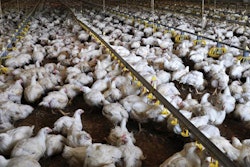
Regardless of whether you are familiar with the 2013 edition of the combustible dust commodity standard NFPA 61 (Standard for the Prevention of Fires and Dust Explosions in Agricultural and Food Processing Facilities), there is good reason to be concerned with the extensive changes made in the 2017 edition. The changes are truly significant and will affect all those involved in the feed industry.
Regulatory background
Due to the historically high risk of explosion in the grain and animal feed industry, the Occupational Safety and Health Administration (OSHA) had issued regulations (29CFR1910.272) regarding grain dust fires and explosions. However, the explosion disaster at Imperial Sugar (2008, 14 killed) increased public pressure, resulting in OSHA issuing the 2008 National Emphasis Program (NEP), which effectively makes the National Fire Protection Association (NFPA) standards on combustible dust the enforcement tools for OSHA regarding all industries handling combustible dust.
This means the animal feed industry is one of the main targets for combustible dust hazards and compliance.
The above situation has also led NFPA to publish a new standard, NFPA 652 Standard on the Fundamentals of Combustible Dust (2015), to assure the fundamentals of combustible dust hazard mitigation and control are uniformly covered.
Typically, one would have to refer to 652 and 61 when addressing combustible dust hazards, but the NFPA 61 committee decided to revise the 61 standard to make it as “standalone” as feasible (only partially accomplished).
Major changes to the 61 standard
Achieving this goal required major changes in the 61 standard. The following information will list the major changes in the 2017 edition of the 61 standard in comparison to the 2013 edition:
- Should a conflict arise between what is stated in NFPA 652 and 61, the requirement of 61 would take precedence over the requirement of 652.
- If there is a requirement in 652 that is not found or covered in 61, then the requirement of 652 takes precedence.
- There are several new definitions (chapter 3) that have been added to cover the new combustible dust compliance topics that were not in the previous edition. Important examples are Bucket Elevator, Combustible Particulate Solid, Dust Hazards Analysis (DHA), Ingredient Transport System, Replacement-in-Kind. These definitions are key to understanding the scope and meaning of many of the new or revised requirements.
- Chapter 4, General Requirements, is a new chapter and describes the responsibilities of the owner/operator of the facility. Much of the same chapter in 652 has been incorporated with inclusion of GMP and HACCP considerations unique to the agri and food industries. This also includes much of the previous edition chapter 4 requirements.
- Chapter 5, Hazard Identification, is also a new chapter and describes the responsibility of the owner/operator to determine the explosibility characteristics of the suspected combustible dust. It is not feasible to manage a combustible dust unless the user knows the characteristics of the material that make it a combustible dust hazard. This includes such characteristics as particle size, moisture, Kst, Pmax, minimum ignition energy (MIE) and minimum explosive concentration (MEC). This chapter provides the standards to be used to properly determine the explosibility of the combustible dust.
- Chapter 6, Performance Based Design Options, is another new chapter and describes an alternative approach to provide combustible dust hazard compliance, mitigation and control. This is an alternative to prescriptive requirements found in the other parts of the standard. This option is new to NFPA 61, but has been available in the other standards for more than a decade. If a prescriptive requirement is not feasible or too costly, the use of the Performance Based Design alternative may be the best answer.
- Chapter 7, Dust Hazards Analysis (DHA), is a critical new chapter. It is the owner/operator’s responsibility to comply with this requirement. Consider this: If you know you have a combustible dust, why wouldn’t you determine what hazards that dust creates and then determine how you are going to mitigate or control those hazards? This is a new and important requirement for the standard and must be completed by summer 2021 or sooner. This is a requirement for:
- New processes and those undergoing significant modification, i.e. more than 25 percent of replacement cost.
- Existing processes and equipment systems such as bucket elevators, conveyors, grinding equipment, spray dryer systems and dust collection (Note: The author strongly believes this should include centralized vacuum cleaning systems and most pneumatic conveying systems). This is a diversion from the other NFPA commodity standards which make the requirement fully retroactive for all existing systems. It makes sense to consider all systems and operations involving combustible dusts, whether new, revised or existing.
- Chapter 8, Hazard Management: Mitigation and Prevention, is a major modification of the previous 61 standard. This chapter includes the information of chapters 7 through 12 of the previous edition, with additional requirements and revisions. The following are just a few important examples:
- There are no speed or rate exemptions anymore for bucket elevators. Historical data fully proves that bucket elevators of all sizes, rates and speeds represent significant explosion hazards.
- A new category of “ingredient transport system” has been created which allows exemption of some pneumatic conveying systems used solely for the transport a specifically defined category of material from the necessity of any explosion protection. There are strict guidelines that must be followed.
- Isolation of equipment systems that have the risk of propagation of an explosion is now required.
- Chapter 9, Management Systems, is also a new chapter that covers the programs, documentation, training, etc., required to complete combustible dust compliance. This includes management of change (MOC), training and emergency planning.
- The appendices are often ignored, but should not be. The 2017 edition has extended additional information valuable for explaining what is required for combustible dust compliance.
Combustible dust compliance just makes sense. Why wouldn’t any feed mill want to reasonably minimize the risks of an explosion?
















